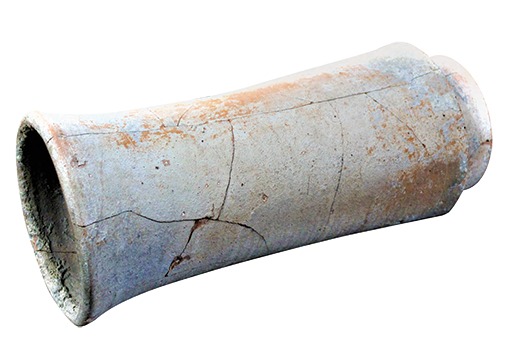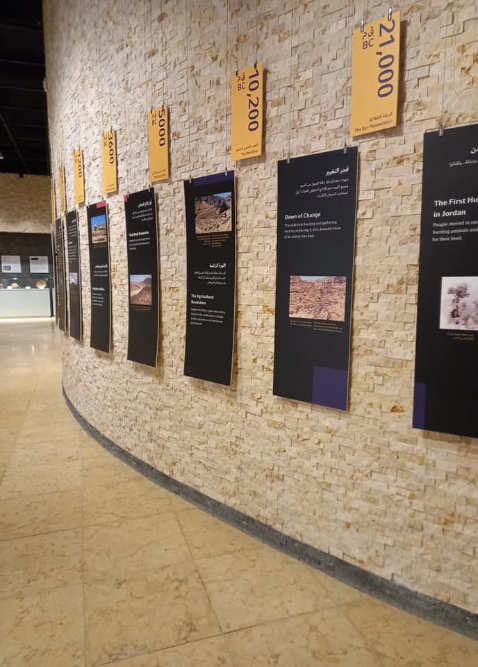Gallery 1: Aqua Kaleidoscope
The Nabataeans who built Petra were nomadic tribes with skillful water management, hydraulic engineering and flood control technologies. This exhibition explores the mysteries of the Nabataean water engineering using exhibits of water pipes excavated from Petra and reconstructed 3DCG images of the hydraulic facilities at Petra.
- The Nabataeans: Nomadic Tribes and Skilful Hydraulic Engineers
- Nabataean Water Engineering
- Water and the Location of Petra
- Water and City Life
- Gardens, Fountains and Baths
- Water Channels and Life-giving Veins
Water Channels and Life-giving Veins

From its earliest days, water was transported to Petra from the springs of the Sharah through rock-cut channels. By the 1st century BC, however, simple long pottery pipes were added that helped reduce evaporation and contamination, and facilitated its more efficient diversion and distribution to public buildings and homes.

The pipes were developed with time for better joints, which were sealed with hydraulic lime mortar. By the 4th century AD, pipes were made with thick walls and waisted bodies to reduce the speed of water inside, probably because of the increased flow of water from the springs during that rainy period.
Over time, the pipes were engineered with better joints and attachments, which were sealed with impermeable hydraulic cement. By the 4th century AD, pipes were tapered with thick walls along narrowed cylinder centres to reduce the speed of transported water. It has been speculated that this unique shape was created to slow down the speed of flowing water during the rainy periods. Abrupt changes in water velocities would have cracked and ruptured the ceramic pipes.
The Nabataeans also used lead pipes since the last decade of the 1st century BC, which appeared much like modern galvanised pipes. Due to the high concentration of lime in the spring water the lead pipes were soon coated inside by a dense lime deposit which avoided lead poisoning.
 For Audio Guidance, please Click here
For Audio Guidance, please Click here





